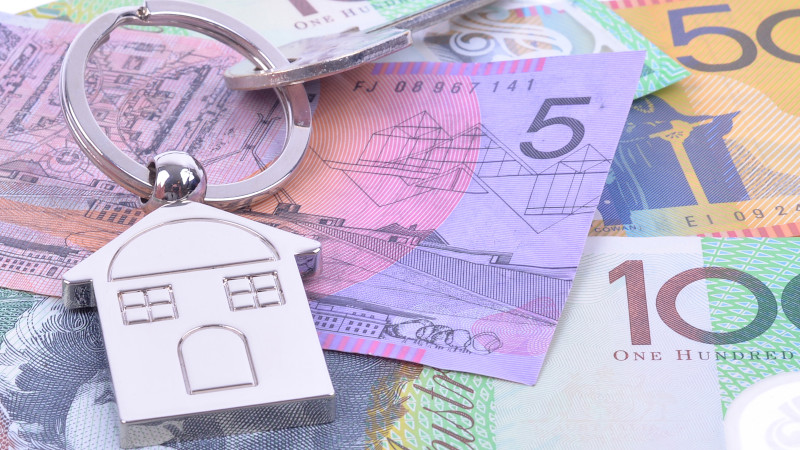[ad_1]
Two schools of thought are emerging regarding how an inevitable increase in interest rates will impact Australian property markets, with some experts predicting a looming disaster for borrowers while others say a likely minor increase to the cost of finance won’t have a material impact.
Two schools of thought are emerging regarding how an inevitable increase in interest rates will impact Australian property markets, with some experts predicting a looming disaster for borrowers while others say a likely minor increase to the cost of finance won’t have a material impact.
While the Reserve Bank of Australia maintains it doesn’t expect to shift the official cash rate from its historic low of 0.1 per cent until 2024, interest rates offered by major banks have been volatile in recent weeks, with a series of cuts and hikes designed to move borrowers away from fixed rates and towards variable rate loans in anticipation of an earlier increase.
A recent survey commissioned by the Finance Brokers Association of Australia showed that 75 per cent of respondents believed an interest rate hike would put added pressure on their finances, with 56 per cent saying they would need to refinance their home if rates were to rise.
Most alarmingly, 57 per cent of respondents said they were “not at all” likely to be able to meet a monthly increase to their mortgage of $300, or 1 per cent for the average mortgage of $571,992, with just 9 per cent saying they would “highly likely” be able to deal with it.
FBAA managing director Peter White AM, who has spent 40-years in the finance and broking industry, said the survey showed many Australians had possibly grown complacent, with the last increase to the official cash rate occurring more than 10 years ago.
“Many Australians are clearly on the brink and are sleepwalking into disaster, living in the false hope that rates will stay this low,” Mr White said.
“This survey is a wake up call and shows that even a small rise in rates – which is looking more likely next year with rising inflation – could be catastrophic for our nation.”
Mr White said borrowers must start preparing for the inevitability of a rate rise, with economic indicators such as inflation and employment numbers starting to point towards a hike as early as next year.
“The housing market has soared and there is a reasonable chance it will undergo a correction, meaning that those with low deposits who have stretched themselves to make large repayments could see themselves with negative equity, owing more than the value of the property,” he said.
“Add a mortgage increase they can’t pay, and there could be a lot of people in real trouble.”
On the flipside, research by the Property Investment Professionals of Australia showed that historically, interest rates have had little influence on whether Australian property markets boom or bust.
PIPA chairman Peter Koulizos said analysis of five periods of increasing cash rate movements since 1994 showed house prices continued to rise after interest rates were hiked.
None of those periods involved a decrease to housing values, while the gains ranged from a 1.1 per cent increase from June to December 1994, to a 35.7 per cent gain from March 2002 to December 2003.
Mr Koulizos said the strength or weakness of property markets often had more to do with the local economy, consumer sentiment and affordability.
“There has been much conjecture over the past 18 months that record low interest rates are the singular reason why property prices have skyrocketed, when the cash rate was already at a former record low of 0.75 per cent before the pandemic hit,” he said.
“There are clearly a number of factors at play, including some buyer hysteria I’m afraid to say, but one of the main reasons for our booming market conditions is easier access to credit, which was simply not the case two years ago when rates were also low.
“At the end of the day, even when interest rates are low as they have been for years now, if people don’t have access to finance, it really doesn’t matter what the cash rate is.”
Mr Koulizos also responded to concerns around borrowers not being able to maintain their mortgage payments, dismissing them as alarmist and little more than scaremongering.
“The latest ABS Lending Indicators showed that the national average loan size for owner-occupier dwellings was $574,000 in September, which shows that the vast majority of people are not racking up massive singular mortgages of $1 million or more,” Mr Koulizos said.
“While we don’t expect rates to rise for a year or two yet – and when they do, they are unlikely to ramp up rapidly – the monthly mortgage repayments on a $574,000 loan may increase by about $73 per week if the interest rate increased one percentage point. or from three per cent to four per cent.
“It’s vital to understand that new loans are already being stress-tested against much higher interest rates of about 5.65 per cent, so there is little to be gained by alarmist ‘forecasts’ that are just not supported by the data.”
[ad_2]
Source link

